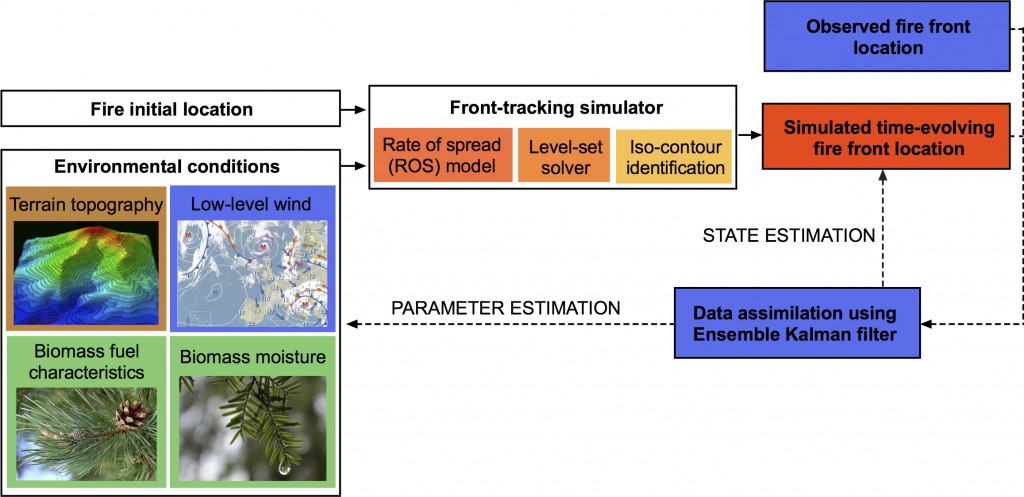FIREFLY simulates wildfire behavior scenarios at landscape to meteorological scales. An inverse modeling strategy is applied based on the assimilation of the fire front location. The key idea is to translate the differences in the observed and simulated fire front locations into a correction of the meteorological and environmental factors (e.g. near-surface wind, dead/live fuel moisture content, dead/live surface loading, dead/live surface-area-to-volume ratio) or directly of the simulated fire front location.
Main components
- a fire spread model that treats the fire as a land surface propagating front and uses a description of the local rate of spread (ROS) as a function of meteorological and environmental factors based on Rothermel's semi-empirical formulation;
- a series of observations of the fire front location (derived from thermal infrared imaging), assumed to be available at frequent times and possibly providing an accurate and incomplete description of the actual fire front;
- an inverse modeling procedure based on an ensemble Kalman filter (EnKF), with two steps per assimilation time window that is sequentially shifted
- the prediction step (forecast) in which the modeling system is integrated until the observation time to forecast the fire front position given some uncertainty ranges in the input environmental parameters
- the update step (analysis) in which the forecast estimates are modified consistently with the new available observations through the Kalman update equation
Next challenges that are part of the ANR FIREFLY project
Ongoing work aims at extending the data assimilation approach to coupled atmosphere-fire modeling and at making the data assimilation process efficient and robust. The key idea is to be able of correcting uncertain biomass fuel input parameters and the fire front position, and of handling fire front position errors to produce more accurate coupled atmosphere-fire model predictions for a given fire event.
4 steps are planned:
- Sensitivity analysis to identify the most influential parameters on fire spread and fire-induced wind and that are the most important to infer through data assimilation
- Emulation of the coupled atmosphere-fire model using machine/deep learning to learn the response of the coupled atmosphere-fire model to variation in uncertain parameters
- Integration of the emulator within the data assimilation workflow to accelerate the parameter estimation step
- Evaluation against experimental fires

